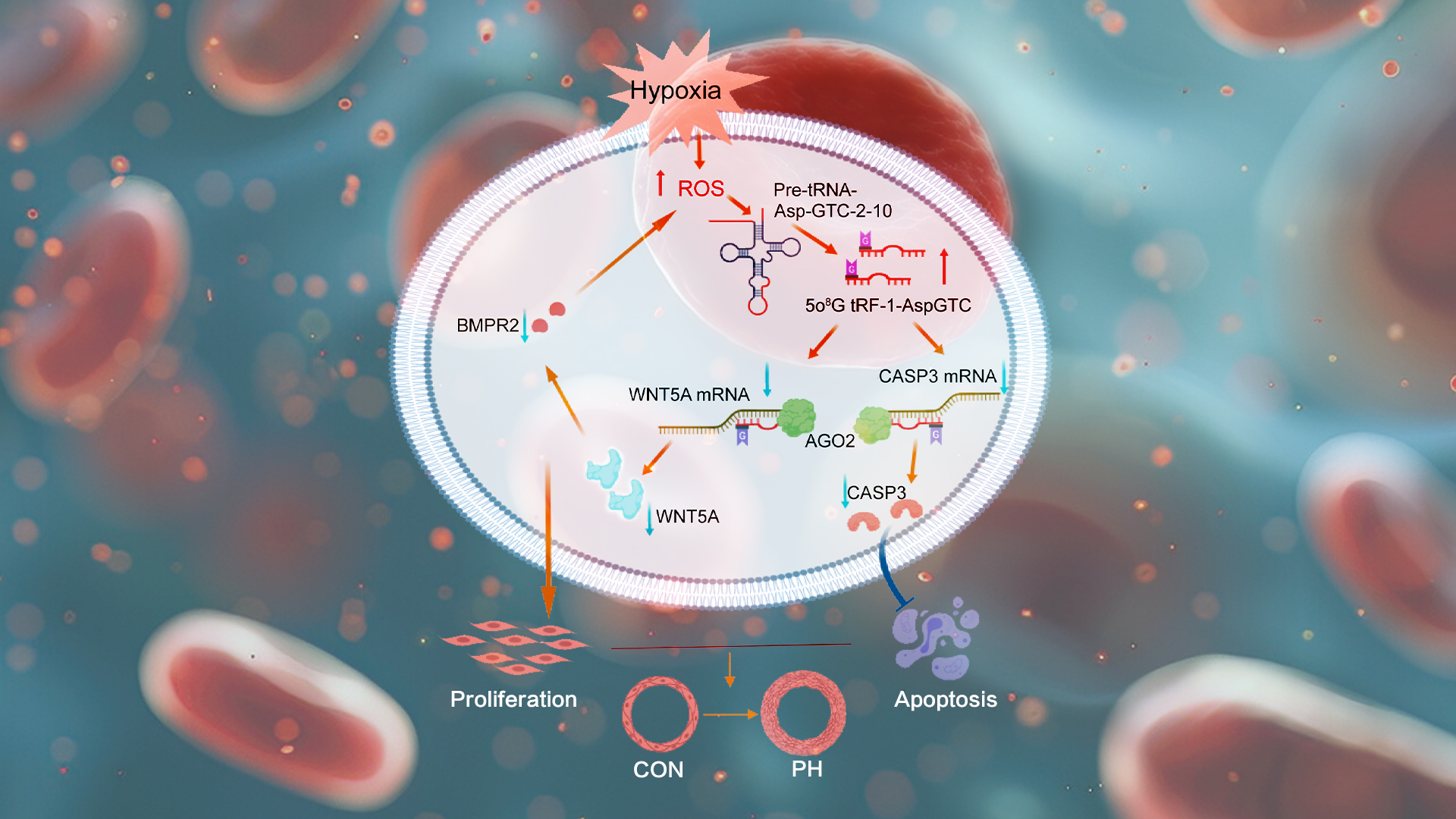Pulmonary hypertension (PH), a type of “vascular cancer-like disease”, has garnered significant attention due to its profound impact, grim prognosis, and alarming mortality rates.
Transfer RNA (tRNA) and its precursor-derived small RNAs (tsRNAs) constitute a unique class of non-coding small RNAs that exert pivotal regulatory influence at the transcriptional and translational levels of gene expression, playing a crucial role in a spectrum of diseases. Recent breakthroughs indicate that guanine (G) in RNA can be oxidized by reactive oxygen species (ROS) to form 8-oxoguanine (o8G), altering the traditional G-C base pairing to o8G-A, thus redirecting RNA to novel downstream genes.

A collaborative research team, led by Professor Xiao-Wei Nie from the First Affiliated Hospital of the Southern University of Science and Technology (SUSTech) and Professor Jinsong Bian’s group from the Department of Pharmacology at SUSTech, has uncovered that tRF-1-AspGTC with a site-specific o8G modification presents as a novel therapeutic target and potential biomarker for PH. This marks the first observation of tsRNA undergoing o8G modification during PH progression, prompting an in-depth exploration of the biological role and molecular underpinnings of o8G-modified tRF-1-AspGTC in PH-related vascular remodeling.
Their groundbreaking research, entitled “o8G Site-Specifically Modified tRF-1-AspGTC: A Novel Therapeutic Target and Biomarker for Pulmonary Hypertension”, has been published in the top cardiovascular journal Circulation Research.
Utilizing high-throughput microarray analysis, the researchers identified dysregulated tsRNA expression with o8G modification in the lung tissues of PH patients, notably an upregulation of tRF-1-AspGTC with o8G modification at the 5th position in its seed region (5o8G). This discovery revealed that 5o8G tRF-1-AspGTC redirects the mRNA of WNT5A and CASP3, significantly inhibiting their expression and reversing the hypoxia-induced excessive proliferation and apoptosis resistance of pulmonary artery smooth muscle cells.
In the serum of PH patients, two forms of tRF-1-AspGTC were detected: one with 5o8G modification and another unmodified, both significantly elevated compared to normal conditions. The 5o8G-modified form demonstrated a particularly strong correlation with the mean pulmonary artery pressure (mPAP) and systolic pulmonary artery pressure (sPAP) of PH patients, suggesting its potential as a diagnostic blood biomarker.
This pioneering study elucidates the mechanism by which 5o8G tRF-1-AspGTC acts in PH. By redirecting the mRNA of WNT5A and CASP3, it influences PASMC proliferation and apoptosis resistance, mediated through the BMPR2-ROS/5o8G tRF-1-AspGTC/WNT5A signaling pathway, thereby exacerbating PH development. Inhibition of 5o8G tRF-1-AspGTC can disrupt this pathway, offering a novel therapeutic strategy for PH management. Moreover, the findings lay the groundwork for employing 5o8G tRF-1-AspGTC as an innovative biomarker for PH diagnosis.
Postdoctoral fellows Junting Zhang and Yiying Li from the First Affiliated Hospital of SUSTech are the first and co-first authors, respectively. Professors Xiao-Wei Nie and Jinsong Bian serve as corresponding authors.
This pivotal research was supported by the National Natural Science Foundation of China (NSFC), Guangdong Basic and Applied Basic Research Fund, Shenzhen Science Fund for Distinguished Young Scholars, Shenzhen Science and Technology Program, and the China Postdoctoral Science Foundation.
Paper link: https://doi.org/10.1161/CIRCRESAHA.124.324421
To read all stories about SUSTech science, subscribe to the monthly SUSTech Newsletter.
Proofread ByAdrian Cremin, Yingying XIA
Photo ByYan QIU